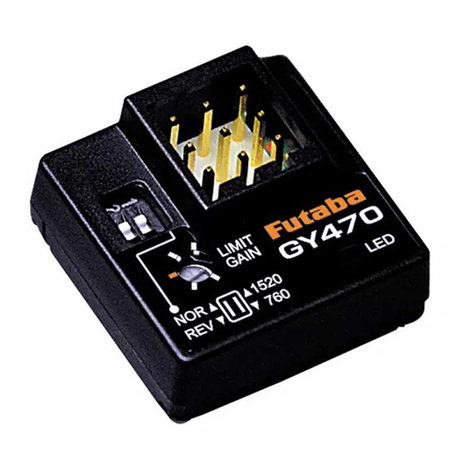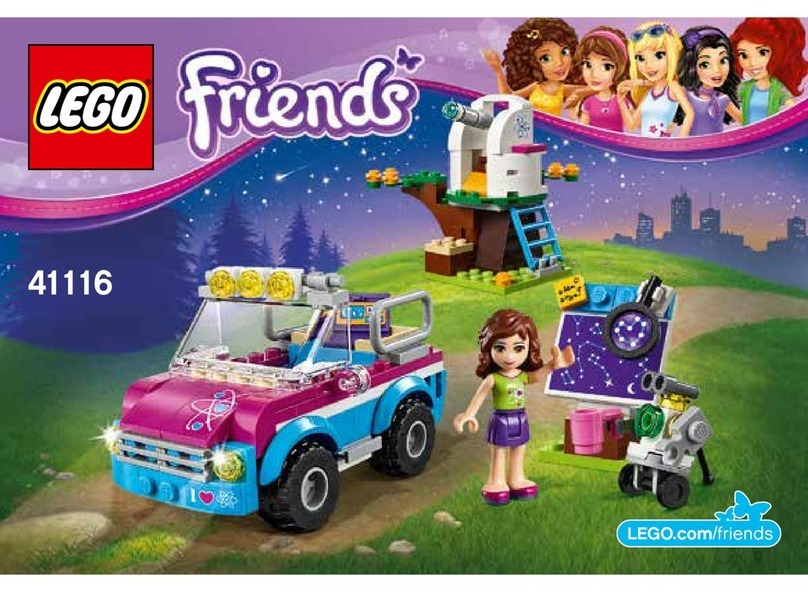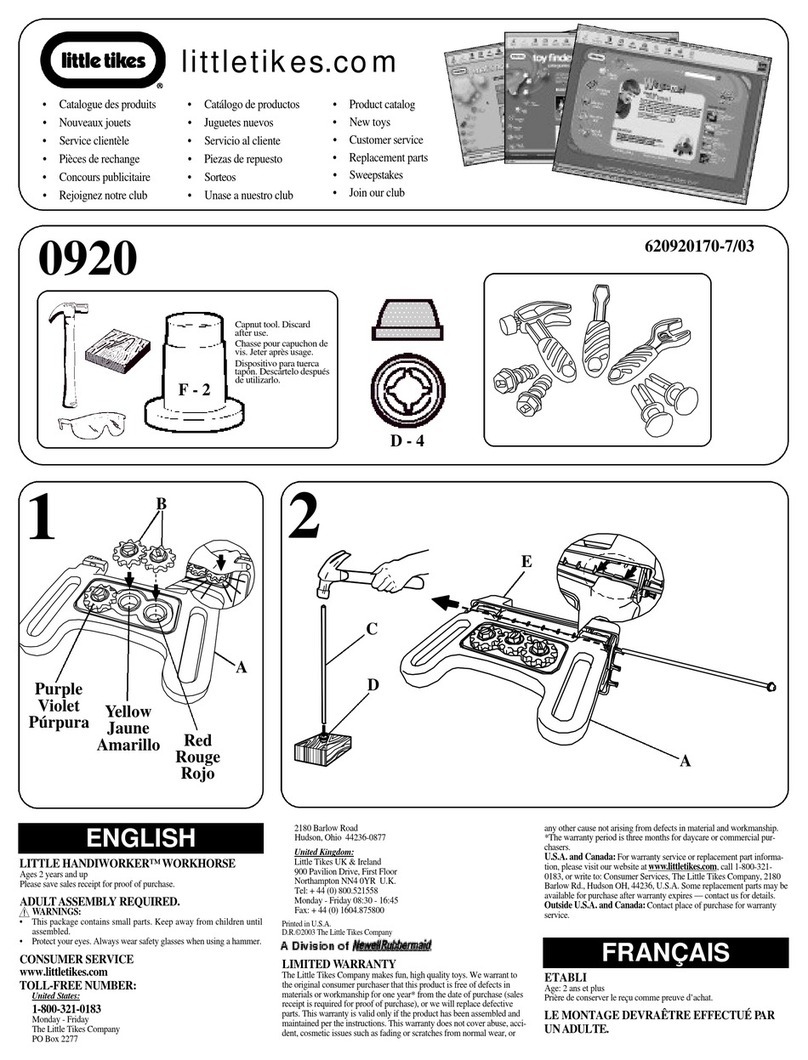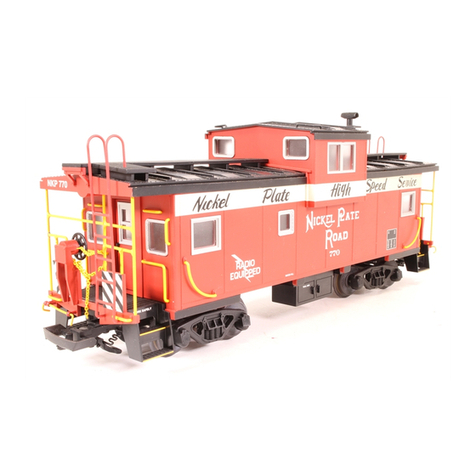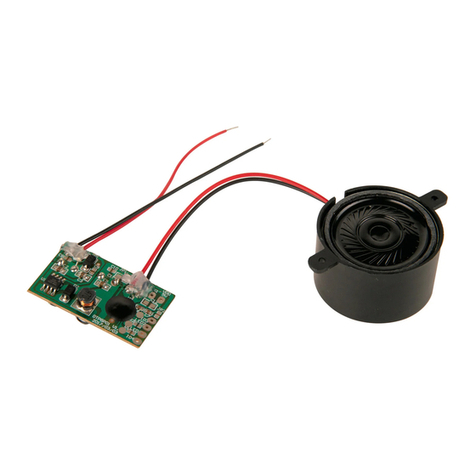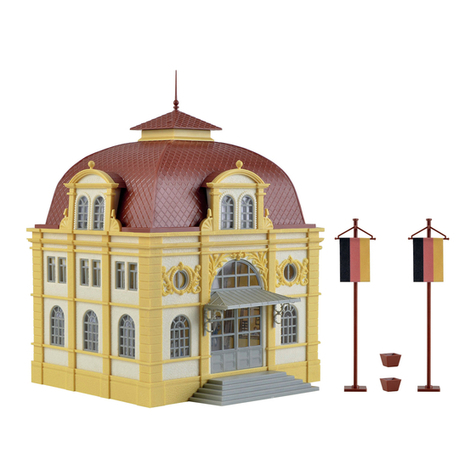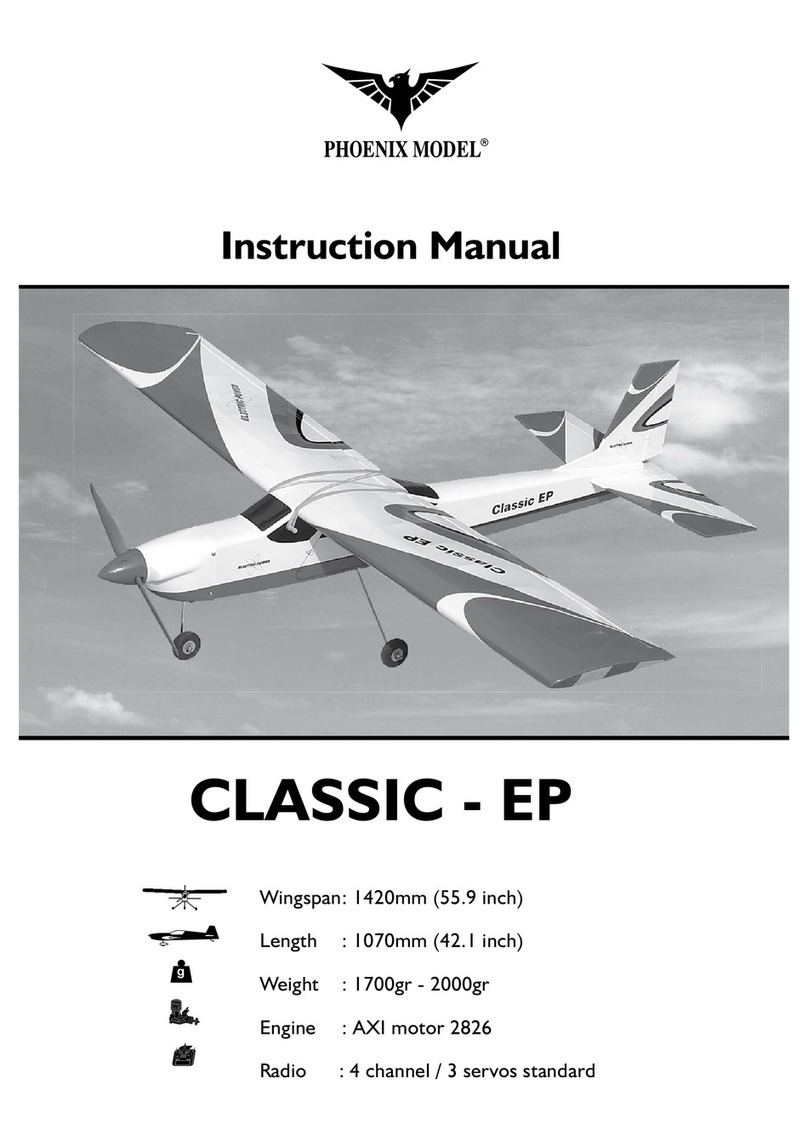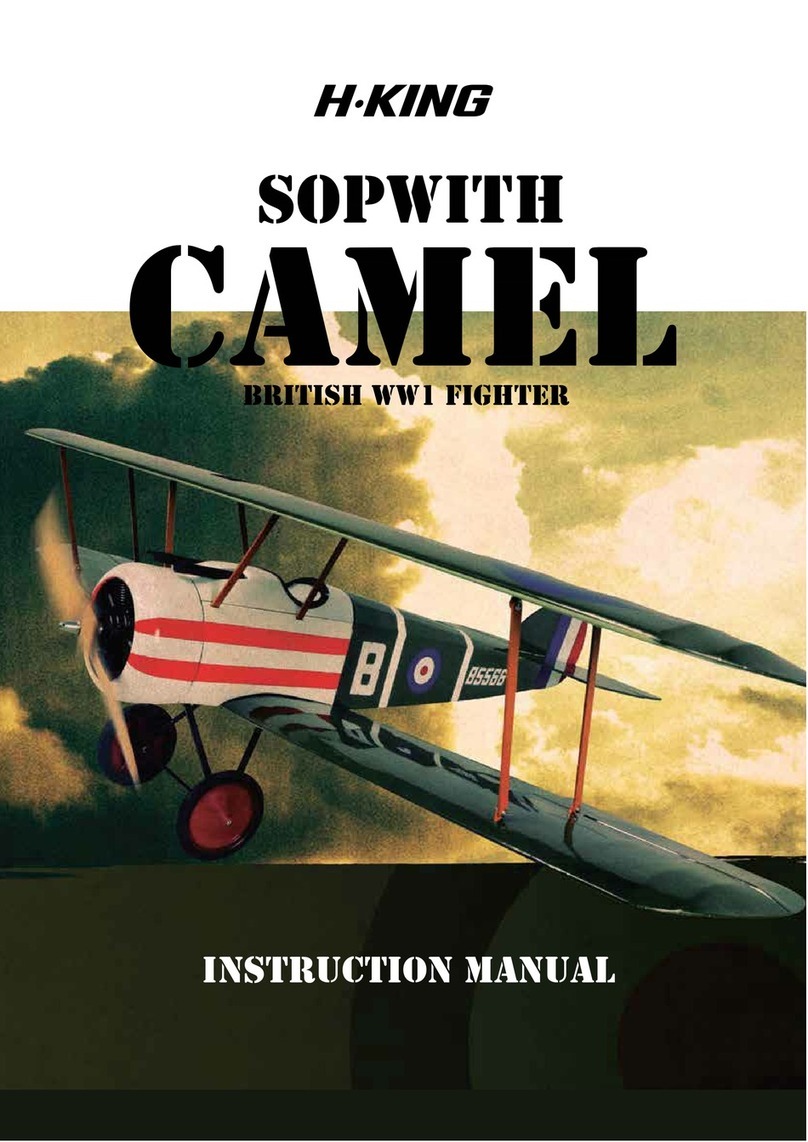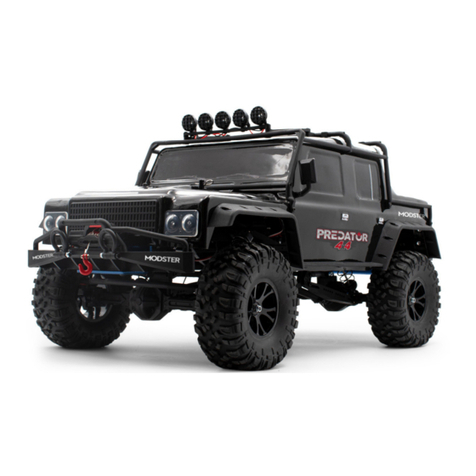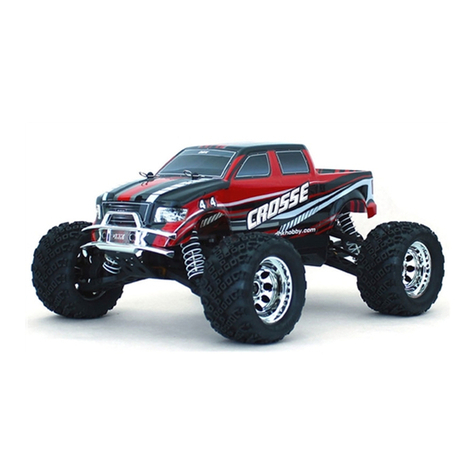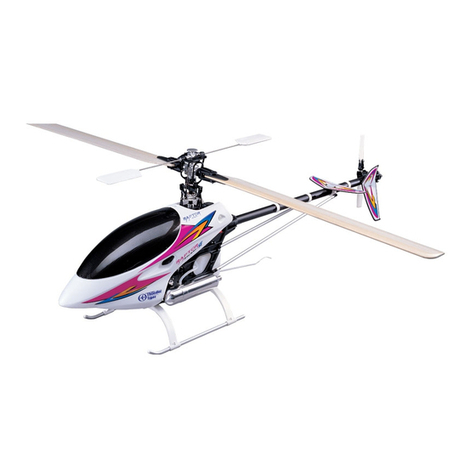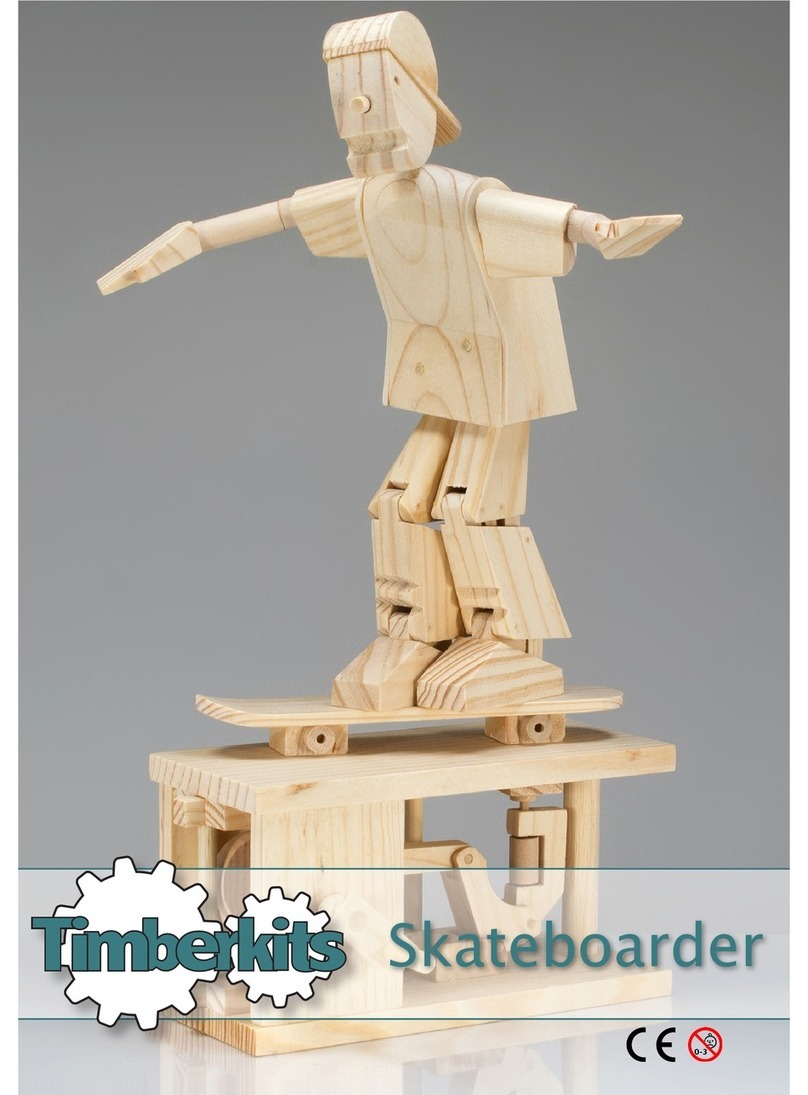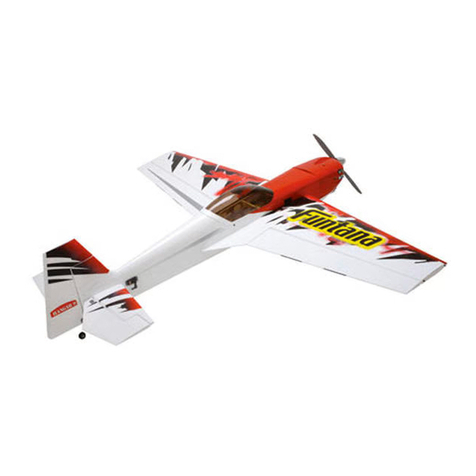▢ 18. Locate the parts shown in the illustration above and give all the brown, laser cut edges a light
sanding to aid glue adhesion. Temporarily attach the deck frame (23) to your flat building surface
using six or eight small pieces of paper-thin low-tack double-sided tape. This will ensure that no
twisting occurs during assembly.
▢ 19. Locate the printed deck (24) and the deck frame biscuits (25). Glue the deck accurately in
position on the deck frame using the biscuits to aid alignment. In order for the deck to clip snuggly
onto the hull it’s essential that the deck frame (23) remains absolutely flat during this process. If
necessary use suitably heavy weights to hold the edges of the deck down while the glue dries.
▢ 20. Locate the bow, midship and stern gunwale supports (26, 27 & 28) and glue in position on
the deck (24), flush with the outer edge. As before, use heavy weights to keep the parts, and the
deck below, pressed flat. When the glue has set, attach the gunwale (29) and reapply the weights.
▢ 21. Assemble the rear seat and equipment locker using parts 30, 31, 32, 33, 34, 35 & 36. NOTE!
Do not glue this or the steering console to the deck until all items have been painted.
▢ 22. Assemble the steering console using parts 37, 38, 39, 40, 41 & 42.
▢ 23. Carefully glue together the comms tower using parts 43, 44, 45, 46 & 47. When set, attach
the assembly to the top of the equipment locker.
Section 5: Finishing
In this section we’ll fit and remove the motor, install the propeller shaft and rudder tube. make the
boat waterproof and carry out final assembly of the deck fittings.
▢ 24. Unbolt the motor mount bracket (4a) and attach your chosen 280 brushed motor. Refit the
bracket / motor and slide your propeller tube into the hull. Accurately align the tube with the
motor shaft in both the vertical and horizontal planes, then permanently glue the shaft in place
using 15-minute epoxy. TIP! To guarantee alignment use a small piece of tight-fitting neoprene
tube to link the motor and shaft. When the epoxy has set, remove the motor.
▢ 25. Trial fit the rudder tube, adjust as required (it should be absolutely vertical), then remove it
for refitting after the hull is painted.
▢ 26. Apply two generous coats of Guild Lane sanding sealer to the hull, battery tray (7) and all
wood parts that require painting, including the deck and cabin. Leave to dry between coats and
sand after each coat with 800-grit (or similar) paper. If necessary, repeat until you’re happy that
the wood has been suitably sealed. Apply one generous coat of Guild Lane High Build primer to
the hull and cabin, lightly sand with 1200-grit paper and check for imperfections. Fill as
necessary, sand, re-prime then sand again until all parts are deemed suitable for the top coat.
▢ 27. Add top coats to suit your chosen colour scheme, not forgetting to prime, paint and detail the
seated crewmen, radar antenna (49), fairleads (53), samson post (glue parts 54 & 55), steering
wheel (51), aerials (48) and stretcher (52). The prototype predominantly uses Guild Lane Gloss
Orange (upper hull & deck assemblies), Gloss Red (lower hull), High Build Primer (deck) and
Gloss White (radar antenna and aerials). It also uses JP Black Trimline around the deck edge and
to pick out other minor details.
▢ 28. Glue the steering console, equipment locker and seated crewmen to the deck. Follow this by
attaching the fairleads (53), samson post, radar antenna and aerials.
▢ 29. Locate the remaining deck magnets (56) and glue them firmly into the circular pockets in the
deck frame (23) making sure that the correct polarity orientation is observed.
Section 6: Motor & Radio Installation
We recommend the Planet TS2+2 two-channel radio system for your Thames Lifeboat. Designed
specifically for boat and car modellers the stick-style system is equipped with two primary
channels (throttle and rudder) and two auxiliary channels which you may find useful on other
boats as you explore the hobby further. In this respect the TS2+2 combo also includes a
future-proof 6-channel receiver and a very competitive price tag. Visit jperkins.com for details and
pricing and pick one up at your local model shop.
▢ 30. Refit the motor then join the motor shaft and propeller shaft using tight-fitting neoprene
tube. NOTE! You may need to shorten the prop shaft by cutting a small length from the
non-threaded end.
▢ 31. Fit the propeller and refit the rudder (making sure the waterproof O-ring seal is in place
between the rudder tube and hull) then tighten the rudder tube nut and washer against the top of
the radio tray.
▢ 32. Attach your servo to the servo and battery tray (7) using padded double-sided servo tape
and use a piano wire pushrod to link it to the tiller arm.
▢ 33. Use padded double-sided tape to attach your receiver (forward of the rudder servo), then
test the model for balance, in water. Establish the ideal location for your chosen 2S LiPo battery
then attach it using hook and loop tape. Check for leaks and rectify.
HAPPY CRUISING
The Thames Lifeboat drives well in most conditions but, like all small model boats, excels in calmer
water and looks very much the part, displacing a satisfying bow wave and leaving a tidy wake.
Steering is positive and with the 280 motor / 2S LiPo combination the speed is beautifully
matched to the type. Don’t be tempted to over-power it. This boat has a semi-displacement
(rather than a planing) hull and is not designed for out-and-out speed. When driven accordingly
it is sure to bring enormous satisfaction.
We hope you’ve enjoyed building this model and are suitably enthused to try other boats in the
Wooden Model Boat Company range.
Riviera Motor Boat – WBC1000
PT-109 Patrol Torpedo Boat – WBC1001
Police Launch – WBC1002
